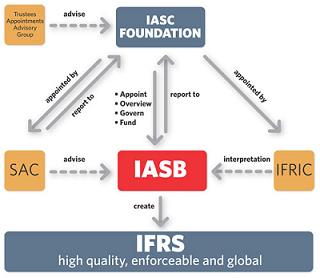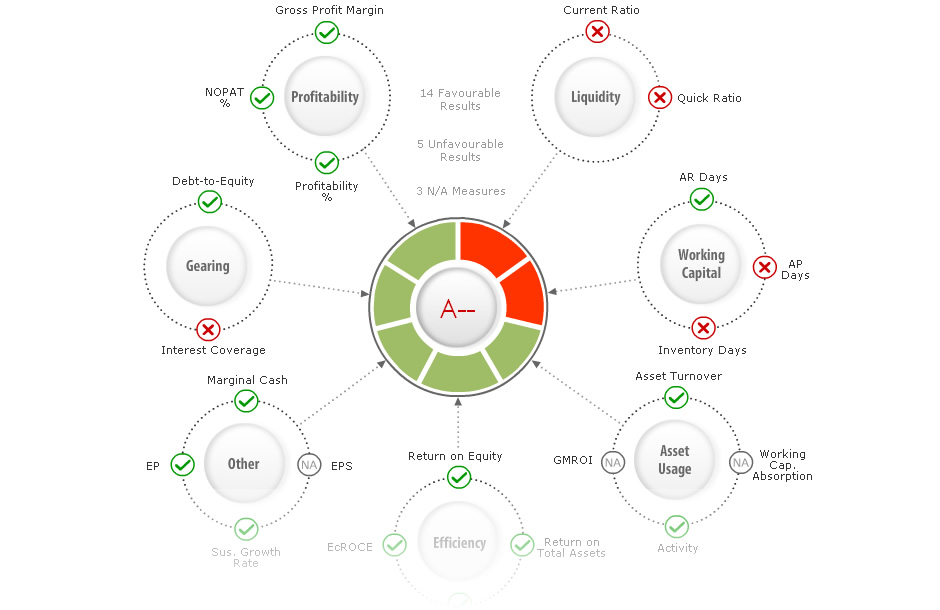Foreign Outsourcing
Foreign outsourcing is a byproduct of the globalization where societies and the cultures across borders have become integrated. This integration had been through globe-spanning network of communications and executions of the national economies. As a result, the economies integrated into international economy through trade, cash flows, foreign direct investments, migration and spread of the technology. However, national economies integration has given rise to controversies owing to outsourcing. Though, it appears to the economists to be an opportunity for states to gain growth through comparative advantage aspect, there are various critiques on the same regarding its demerits. For this case, therefore, it is a twofold-problem which seems debatable among the persons of US and across nations (Snyder &Jeremy 2010, p. 20-22).
Among foreign outsourcing companies, for instance, Delta airlines outsourced 1,000 jobs to India in search of cheap labor. The company realized $25 million in savings and hence allowed the company to add 1,200 reservations and sales positions as well. Similarly, positions in IT had gone offshore with a total of 400,000. US positions recorded. Meanwhile, a total of US employment increase from 129 in 1993 to 138 million in 2003 mainly in services was also recorded. This way, it reveals that despite of heated public debate, outsourcing in US America is very positive to the American economy.
This paper, therefore, takes into consideration of the background of the study; US companies move to outsource factories to undeveloped nations. Besides, it critically looks into the business ethics regarding the barely faire wages that employees receive relative to their performance.
Foreign outsourcing background
It is a practice which had gain fame in the recent past decades as a way that is commonly used by different companies to reduce labor cost. Outsourcing is an effective cost-saving strategy used by transferring portion companies’ work to the outside suppliers rather than completing it internally. It is a practice which relies on the comparative advantage principle; at times it is more affordable to purchase a good or source labor from companies with comparative advantages rather than to produce internally.
Benefits of Foreign outsourcing
Outsourcing jobs to foreign countries has boosted American business to compete in the global economy. As the world economy has become less restrictive as a result of liberalization, US. companies modify their strategies to meet these contemporary world challenges. Competition in the world economy escalates the globalization, in turn incorporates the need for outsourcing for cheap labor. This way, outsourcing is a tool used to obtain a competitive edge in a globalized economy.
American trade across border for cheaper labor had been a crucial movement which has made a number of nations strives economically. Especially, its relationship with undeveloped countries had been an essential to their economic growth by a margin. This way, more and more of the American companies are hiring employees abroad hence enhancing job creation in undeveloped countries.
Outsourcing barely pays well
Many aspects of the average American’s good lifestyles can be solely attributed to trade relationship between US and Asia. That is, a significant proportion of clothes they put on, toys they nature their childhood, and given technologies the use at work or homes, was produced somewhere in Asia. Similarly, commerce with developing nations majorly China and Indonesia is as well reportedly crucial for America’s owned progressive economic achievements. Accordingly, manufacturing investments in developing states are in tens of billions of dollars and a huge number of contracted plants with American companies. However, many of Americans are barely aware that their appetite for consumerism fuels to heights controversial industry. Put simpler, just as the manufactured goods are in plenty than to meet the eye, sweatshops are very complicated (Hira, & Hira, 2005, p. 44-56).
Sweatshops are those factories which are considered to have unreasonable authoritative overseas, enforces long working hours with low payments, giving very harsh working conditions which are either physically or psychologically unhealthy. These outsourcing factories barely pay well regarding to the working conditions employees are subjected to. Considering the living wage, which is barely met by outsourcing factories, is a wage required by a million of workers to met their basic needs for survival. However, it is one of the brands which will remain unreality especially where government of state favors minimum wage. On the other hand, minimum wage is the amount of payment legally set as a benchmark by the states. In which it has to be met by the factories in a host country (Linder& Jane, 2004, p.75-90).
Reasons why outsourcing companies pay minimum wage
There exist some excuses why these sweatshops barely pay well for a living their employees overseas. Despite of the escalating food, energy, housing prices and transport fee around the world outsourcing factories has left workers a dire poverty. They barely receive a living wage to gather for their basic needs and those of their family members. Whether these manufacturing firms operate in Bangladesh, Cambodia, China, or in Philippines, their brands use all sorts of tricks to avoid paying their workers a sustainable living wage (Krishnan, 2007, p. 48).
Sweatshops posits that, paying a living wage seems impossible because there is lack of consensus on how to calculate it. However, from the workers point of view the problem has a little sense in this argument. Even though factories cannot agree on the figure many of similar firms had made no attempts to raise wage at all. Over the past years, of this dilemma have been in existence, multi-stakeholders such as Asia Floor Wage Alliance an alliance of 80-plus garment workers unions, workers representatives and the NGOs from six Asian garment producing nations have attempted to reach consensus but have failed in 2009. It is not the case that consensus is impossible to be reached rather it is just that sweatshops does not want to find it. The living wage was a workers buying power figure suggested to companies as a benchmark solution to the dilemma. Majority of the companies even was to the opinion but to date no company has started to officially it as a living wage benchmark (Snyder &Jeremy 2010, p. 20-22)
Outsourcing companies also argues that consumers do not want to purchase more of the products produced in this firms. For instance, consumers pay only a very small amount on their clothing needs. This way, sweatshops argues that it worth nothing however that a garment worker’s wage is merely 1-3% of the total cost of the garments. If a consumer is willing to spend eight Euros for a shirt, then means the worker though in harsh working conditions is receiving 24 cents. This as well is disputable in that doubling this wage would merely be another 24 cents. The consumer will barely realize the increased figure and if the consumer fails to, the factories will neither notice it. These profits have been observed being observed in the sweatshops profits margins and yet workers’ wage is still way below living wage (Krishnan, 2007, p. 48).
Sweatshops argue that low wage payments enable the hosting nations to gain competitiveness. This dilemma is also argues by the government of states giving reasons for setting minimum wage. Simply because, allowing living wage by the states would shun away the benefits from the sweatshops hence losing competitiveness edge. Cheap labor is a factor that entices production in majority of countries. For instance, China population attracts cheap labor force as well as the productivity of the industry is efficient. Contrary, increased wage rate have been an observed factor that boost morale of productivity, reduce absenteeism and employee turnover. This way, paying the workers a living wage is ideal to improve quality and flexibility. For this reason, therefore, allows the enlighten suppliers to retain a competitive edge (Bosniak et al., 2005:40).

Developing countries are desperate for jobs owing to their unemployment rate. On this note, outsourcing companies hold that they boost these countries significantly as they create job opportunities. It is actually the truth that workers getting jobs at sportswear and garment factories are better than some of the alternatives available to them. The flow of the cash flow from a country into another country has a detrimental impact of paying unfair wage yet they reap massive returns. The slave pay is not at all correlates to the returns realize even though the create employment to most of the developing countries. Generally it is unethical.
Outsourcing payments is unethical
Some of the world leading economists have recognized outsourcing as a necessary step in modernization and development. Jeffrey et al of Massachusetts Institute of Technology have asserted that sweatshops manufacturing in foreign countries, especially, in production of goods like garment and shoes are essential move towards a prosperous economic. This economic growth rate has been evidence in Asian tigers; Korea, Honking, Singapore and Taiwan. A study by University of Santiago de Compostela on the poverty relief and development also indicates that, sustainable international investments have been an economic progress in low income countries (Babin et al., 2012, p. 123-138)
However, foreign outsourcing by garment and footwear factories such as Nike, Converse, GAP, and Levi’s, has been genuinely linked to sweatshops as they are overwhelmingly lucrative. This is because they capitalize immensely on low-wage labor to significantly reduce cost of production. Such factories have been criticized as being involved with other agents, the government of US and developing countries, US corporate business which employs sweatshops labor, and the laborers in the developing countries, in exploitation of the workers. This is because they have been failing to correct the malpractices, in which they are pretty aware of but often claim they are hard to be corrected as purported by NGOs, workers alliances and so forth.
Rawls’ (1971, p.56-70) argument from the veil justice of ignorance would provide a view that foreign outsourcing is unfair and unethical. This is because there are great in equality between the US and the developing states. In developing countries which are relatively worse off the US, the laborers are exposed to the worst working conditions. Besides, it is unfair to as there exists difference in their payment as well. They actually take advantage of the developing country’s desperate need for job. It is true low-income countries are in great need for job creations which outsourcing countries are well-position to provide help. However, outsourcing companies have failed to justify their special obligations on either part of Enterprises Corporation or sweatshops to bare the shift of high wages, good working conditions and so forth.
Even though, outsourcing US companies are not charitable organizations and they are actually subjected to the stiffer market mechanisms, it does not mean that they have to maximize on their returns and fail to regard the socio well-being of its laborers. According to Immanuel Kant’s practical moral comparative posits that human beings ought to be treated as ends in themselves and not only as a means of exploitation to strive (Paton, 1999, p. 19-39). This way, sweatshops are not acceptable at all from their capitalism perspectives to mistreat their labors. It is unethical and unethical to use workers overseas as instruments in the amassing of the ventures profits (Zwolinski & Matt, 2007, p. 689-727)
Conclusion
The controversies surrounding the outsourcing companies in the US labor are suggestive of the ethical challenges. These are inevitable challenges which face US-Asia relationships. Besides, outsourcing companies’ reasons given for low-income payments to sweatshops workers are unethical and not justifiable. Their Laborers are the critical units that constitute and contribute to the nation’s economy at large. For this reason, US and Asia relations contribution to the overall progress needs not to overlook the moral obligations of respecting human rights. It is an essential need to be negotiated by the agents on the incompatibilities between the relative costs and the accruing advantages that are realized as results from their interactions.
Work cited
Babin, Ronald P, and Brian Nicholson. Sustainable Global Foreign Outsourcing: Achieving Social and Environmental Responsibility in Global It and Business Process Outsourcing. Houndsmills, Basingstoke, Hampshire: Palgrave Macmillan, 2012:123-138. Print
Bosniak, L. and others. Working Borders: Linking Debates about Insourcing and Outsourcing of Capital and Labor. Texas International Law Journal, Vol. 40, 2005
Ganesh, S. Foreign Outsourcing as Symptomatic. Class visibility and ethnic scapegoating in the US IT sector. Journal of Communication Management, 11.1: 71-83, 2007
Hira, Ron & Hira, Anil. Outsourcing America: What’s behind Our National Crisis and How We Can Reclaim American Jobs. AMACOM, 2005
Krishnan, J. Outsourcing and the Globalizing Legal Profession. William and Mary Law Review, Vol. 48, 2007
Linder, Jane. Outsourcing for Radical Change: A Bold Approach to Enterprise Transformation. AMACOM, 2004, p.75-90
Mitchell, Edwin T. A System of Ethics. New York: Charles Scribner’s Sons, 2005:485-490. Print
Paton, H J. The Categorical Imperative: A Study in Kant’s Moral Philosophy. Philadelphia, Pa: University of Pennsylvania Press, 1999:19-39.
Snyder, Jeremy. “Exploitation and Sweatshop Labor: Perspectives and Issues.” Business Ethics Quarterly 20.2 (2010)
Zwolinski, Matt. “Sweatshops, choice, and exploitation.” Business Ethics Quarterly (2007): 689-727
Rawls, John. A Theory of Justice. Cambridge, Mass: Belknap Press of Harvard University Press, 1971:56. Internet resource







